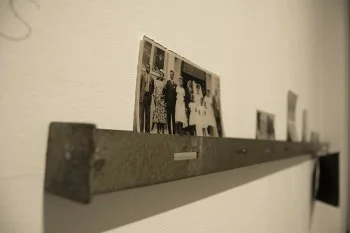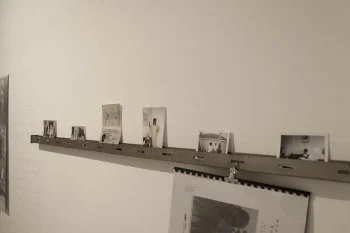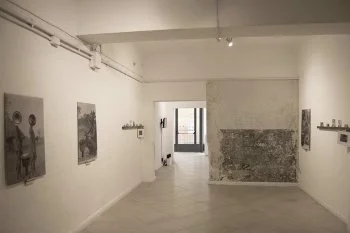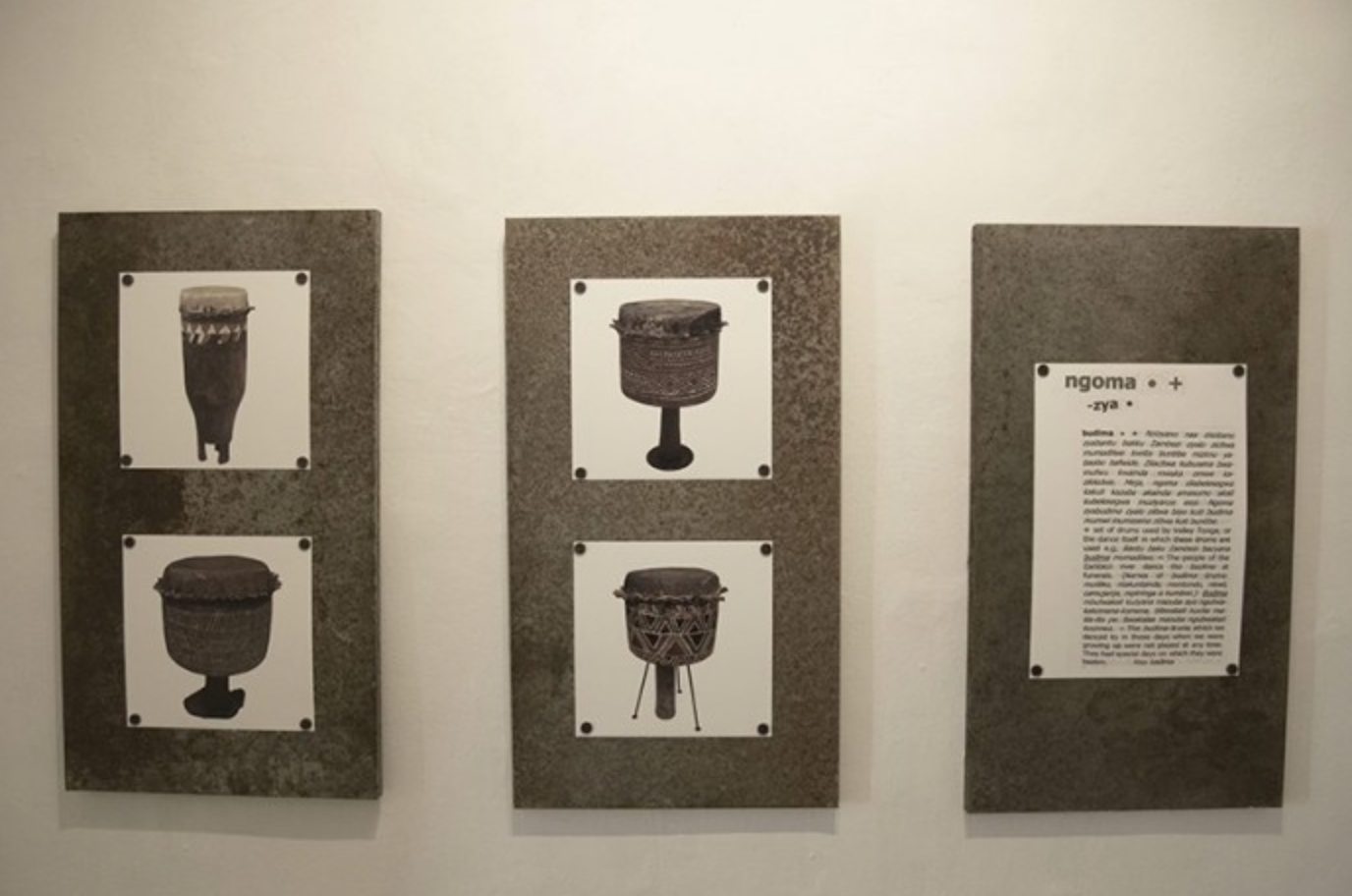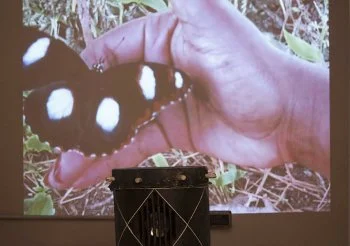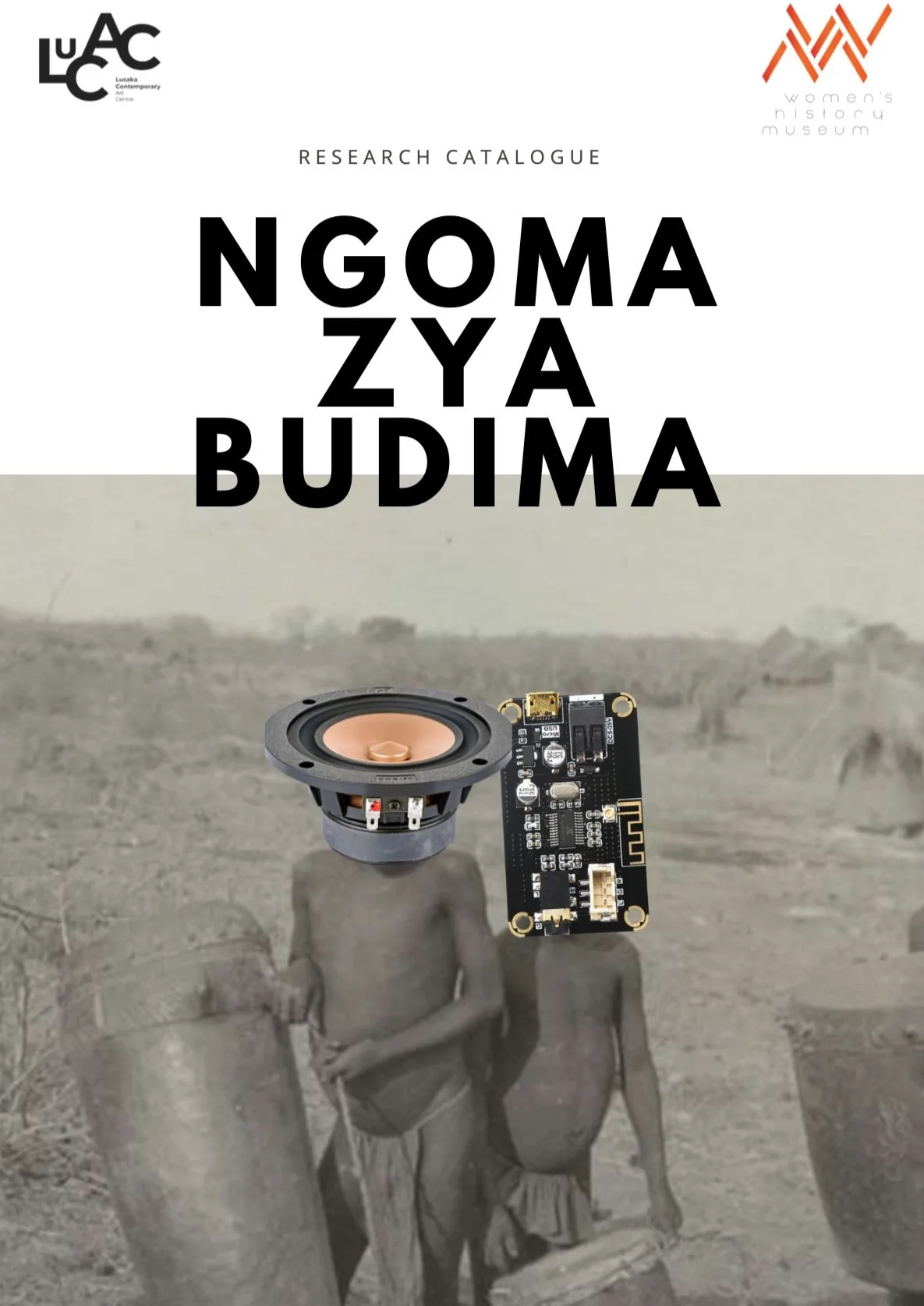Ngoma zya Budima Solo
Exploring Grief and Death /
Celebrating Life and Love;
BaTonga Drum Study
16th December - 14th January
Curated by BHMF
Commissioned by
MQBMBQ/ Bulgari
In collaboration with Villa Lena
with the support of Villa Romana
curatorial text by Justin R. Thompson
Ngoma zya Budima is a research project by Banji Chona that swells with the gravity as well as the ethereality of mourning and remembrance. A displacement from the tangibility indicative of the sonic archive is combined with an unbending physical presence anchored in the soil of origins. This solo project is born out of a personal meditation on grief and spiritual growth. The research presented within it grapples simultaneously with the interruptions of digital interference and the possibilities represented by electroreception, the biological capacity to sense natural electric stimuli. Digital collages that reimagine ethnographic photographs of mourning through the redemptive qualities of the blue moon butterfly and the violence of the subwoofer push us to perceive the capacity of the auditory realm to leave physical traces. The project draws its name from a Tonga drum used for giving thanks and for mourning. The hollow body of the drum is a vessel, capable of moving and containing air and in the process generating sound. The skin stretched and hardened across its surface responds to the humidity, temperature and intensity of its environment. The hand and the receiving ear/body are the conduits. The exhibition is broken into three parts with a visual archive of ngoma zya budimas calling back to anthropological efforts to conserve the aesthetic and not the spirit or function of objects, digital collages coupled with poetic meditations on personal and collective forms of commemoration and a sound based installation that draw upon oral narratives. Chona’s archival cataloguing, reconfiguring and hybridizing of notions and practices of memory disrupt the romanticism often prescribed to rituality and unsettle the role of tradition in defining conservative forms of historiography.
Prospice, Kwacha!
6.01.23 - 17.12.23
curator: Karen Monica Reini
Artists: Banji Chona. Sana Ginwalla, Daut Makala, Germain Ngoma
LUCAC's inaugural exhibition Prospice Kwacha! Brings together four artists, each with their own hybrid Zambian identity and unique relationship with the dynamic crossroads of Lusaka. As a bustling melting pot of ethnicities, cultures and enterprises, Lusaka embodies a myriad of histories both familiar and obscure, of pre and post independence, adversity and opportunity.
Prospice the latin motto of Lusaka’s coat of arms, meaning “look forward”, was chosen by the colonial government to signal their ambitions for the young capitals future. “Kwacha” meaning, “it has dawned” in several local languages, was selected by the newly independent Zambian government as a beacon of our ubiquitous currency of the bright days ahead for the newly formed nation.
Just as we negotiate our daily lives through multiple languages and customs, we navigate the past and the present and invite you to join us as we look forward LuCAC has dawned
Ngoma Zya Budima an Installation by Banji Chona
curatorial text by Karen Reini
Chona's Ngoma Zya Budima (2023) installation explores Chona's research and experiences of grief and the navigation of personal and collective memory. The seven Ngoma Zya Budima (Drums of Darkness) are a set of funerary and ceremonial drums still in use in the Gwembe Valley of Zambia, where Musila (soil from the grave) and Lunyolo (shaving razor) traditionally play an integral part in the funerary proceedings. Chona introduces her family archive to the installation, modern technology and recordings to the ceremonial drums and digital elements to the ethnographic archive photography in an attempt to personalise, deconstruct and reconstruct normative ideologies and historical projections.
“In her works, she is interested in relating to ancestral knowledge and giving traditional elements new meaning – “repatriating through recreating,” as she puts it. Her installation on display at LuCAC is about grief, addressing losses both personal and collective. Ngoma Zya Budima (2020) features a sound work and a collection of drums used in funeral ceremonies combined with photographs sourced from Chona’s own family as well as historical photographs of the BaTonga people. These images, taken by Italian researchers during the colonial period, Chona has modified by adding an extra layer of elements such as butterflies, drums, and modern loudspeakers. A liberating move that lifts the people depicted out of the anthropologist’s objectifying gaze and into another sphere, dreamlike and strange.
The installation continues out in the garden: from the superstructure above the square in front of the art centre hangs a mobile consisting of rattles also used at funerals, where they are fastened to rings around women’s ankles. Beneath the mobile is a mirror placed in a small mound of the red soil in which the dead are traditionally buried and with which, according to Chona, the BaTonga people have a deep connection. She encouraged visitors to touch the art, and in the artists’ conversation she expressed a general interest in “allowing temporality.” The earth-based and organic materials she uses in her art will always disappear, and she pointed out that the same applies to memories. She referred to herself as a kind of alchemist, taking a critical view of the tendency in Western culture to want to hold on to things.”


Further Reading
The most integral parts of this body of work would not have been possible without the research conducted and employed in collaboration with The Women’s History Museum and The Swedish Ethnographic Museum.
Workshop based research was carried out by [indigenous researchers] in a series of villages within the Gwembe Valley Region where the valley Tonga dwell. The overall aim was to give agency to the original proprietors of a collection of cultural objects and artifacts held in the Swedish Ethnographic Museum.
A total of four workshops were held in three districts; Gwembe, Zimba and Sinazongwe which all form part of the Gwembe Valley. The report covers these workshops that involved a total of 48 people in four villages namely, Munyumbwe, Siabaswi, Madyongo and Siampondo. All the participants were residents of the villages in which all had lived for more than 10 years with 38 of them born there.
The workshops were divided into two teams of researchers, A and B. Team A‘s major aim was to engage object owners in developing an inclusive methodology of developing supporting knowledge of the objects. Team B’s focus was to identify the best software and tools to enhance digital access to historical collections by the owners of objects in village settings and develop a participatory methodology for developing the end users of the platform.
These objects, and many others held in a plethora of Western Museums, lack important context and historical interpretations; the perspective of the indigenous person. The “owners'' or “alchemists” of the objects are at the crux of enriching [from the root] existing metadata in museum collections. Thus correcting and layering historical trajectories of storytelling and narrative construction. It is paramount that indigenous researchers and practitioners are considered researchers in the truest sense of the word and not merely research subjects. This alters the positionality we occupy as conduits of our own narratives and complex identities.
It is from this report that the first seeds of information on Ngoma Zya Budima and accompanying artifacts such as Masebelele, Inkaya etc. were acquired. Further research was carried out independently through one on one interviews with members of the BaTonga who have migrated into Lusaka; the epicentre over many decades. Further credit is to be attributed to E. Syabbalo, an Indigenous Researcher who compiled an illustrated research catalogue entitled Tonga Crafts in Figures.
Further thanks are to be attributed to the Swedish Ethnographic Museum for providing access to their digital collection in which the anthropological photographs of the BaTonga during a Budima Ceremony (1918) taken by Lidio Cipriani were sourced.
Below is a detailed research catalogue which serves to provide information on the anthropological photographs and their various constitutive elements.
